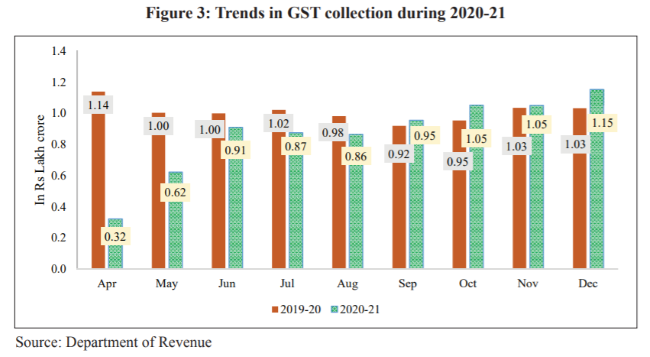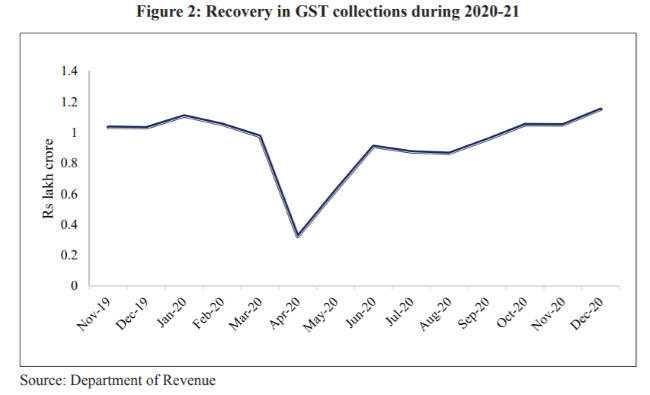
GST compensation shortfall: The department of expenditure of the finance ministry released Rs 5,000 crore this week as the 16th weekly instalment of the GST compensation to the states. Of this total, Rs 4,597 crore was released to 23 states and Rs 402.84 crore to three Union territories with legislative Arunachal Pradesh, Manipur, Mizoram, Nagaland and Sikkim are states with no revenue gaps arising from GST implementation.
With this, Rs 95,000 crore or 86% of the GST compensation shortfall has been released to states and Union territories so far. Of this, Rs 86,729.93 crore has been released to states and Rs 8,270.07 crore to 3 UTs with legislative assemblies.

In October 2020, the Union government had set up a special window to borrow on behalf of the state governments to meet the GST compensation shortfall of Rs 1.10 lakh crore arising on account of GST implementation. The Centre has completed 16 rounds of borrowings so far from October 23, 2020.
READ I Consultations, regulation key to the success of banking reforms unveiled in Budget 2021
GST compensation 16th tranche raised at 4,65%

The 16th Instalment of Rs 5,000 crore released this week to state governments was borrowed at an interest rate of 4.65%. The average cost of borrowing for these 16 tranches is 4.78%.
Apart from the funds raised through the special borrowing window, the Union government has also granted additional borrowing permission equivalent to 0.50% of gross state domestic product (GSDP) to states to help them meet the GST compensation shortfall. Permission to borrow the entire shortfall of Rs 1,06,830 crore (0.50 % of GSDP) has been given to 28 states.
READ I Indian economy: Focus on fiscal consolidation will hurt fragile recovery
Why GST compensation is paid to states
A nation-wide goods and services tax came into force through the Constitution (One Hundred and First Amendment) Act, 2016. The new tax subsumed several central, state and local taxes levied in India. This resulted in losses to states that ceded their powers to levy indirect taxes. The states receive a component of the GST in the form of SGST (State GST), and a share of the IGST (Integrated GST). The Union government had agreed to compensate states for revenue shortfalls arising from the rollout of GST for a period of five years ending 2022.
The shortfall is raised through a compensation cess charged on ‘demerit’ goods. The shortfall is calculated by assuming a 14% compounded annual growth on the base year (2015-2016) revenue. For the financial year 2020-21, the shortfall is expected to be Rs 3 lakh crore. The compensation fund would raise about Rs 65,000 crore through cess and the balance is paid as compensation to states.

